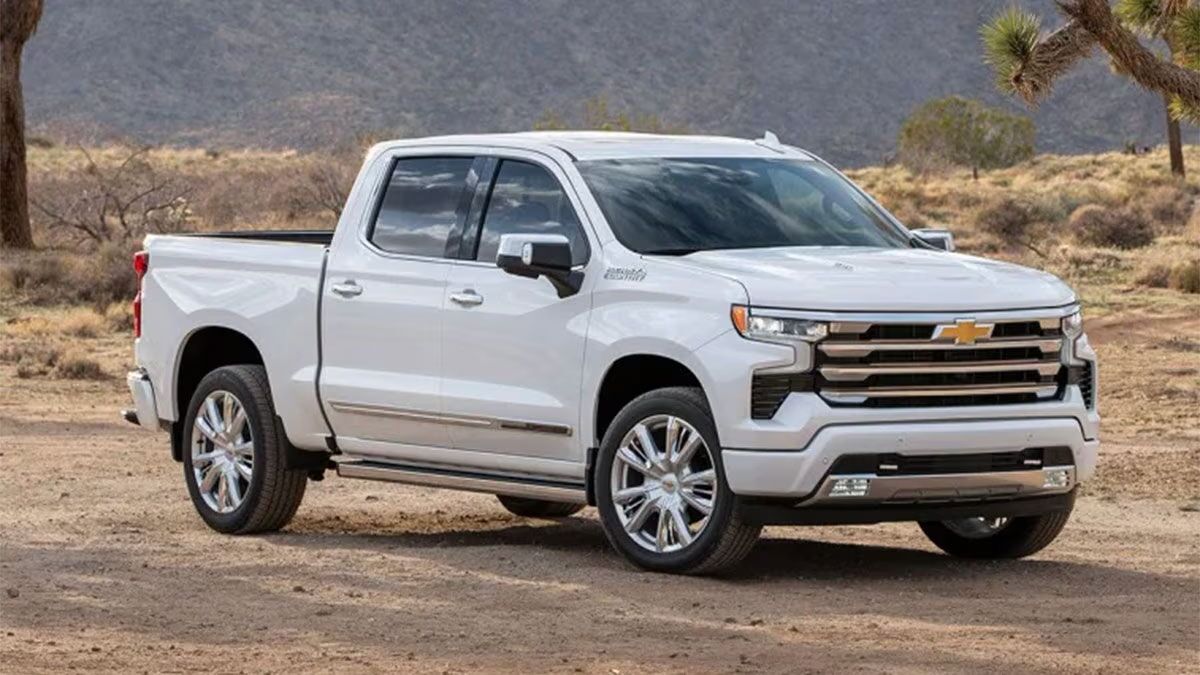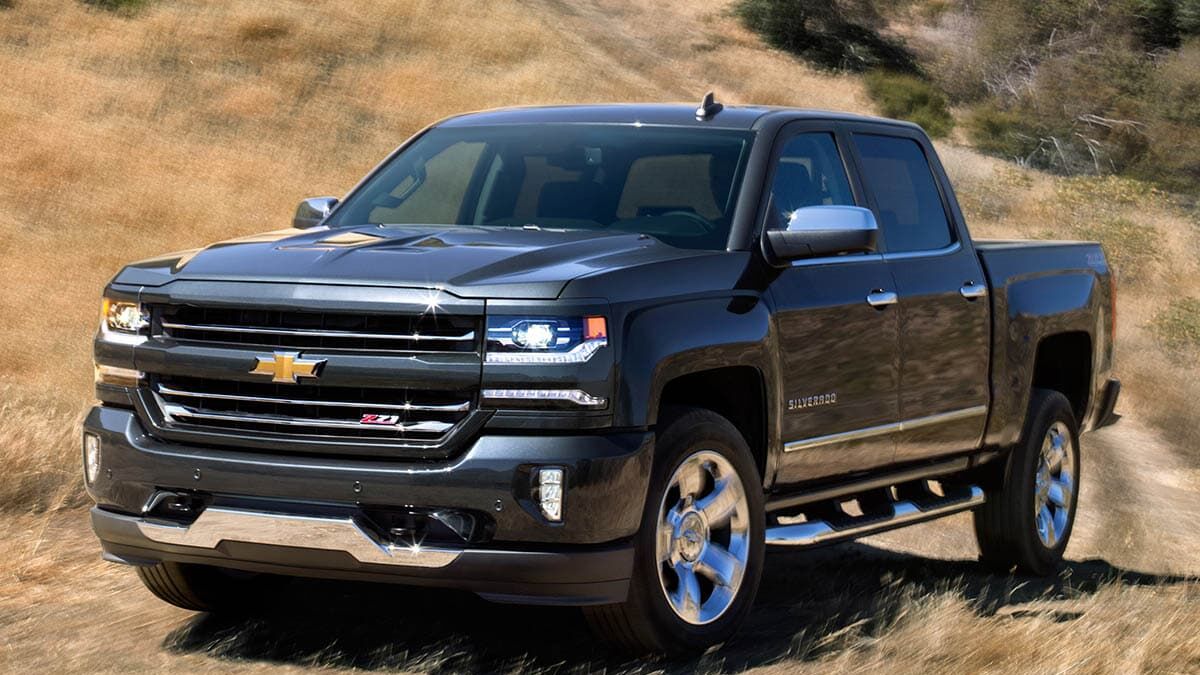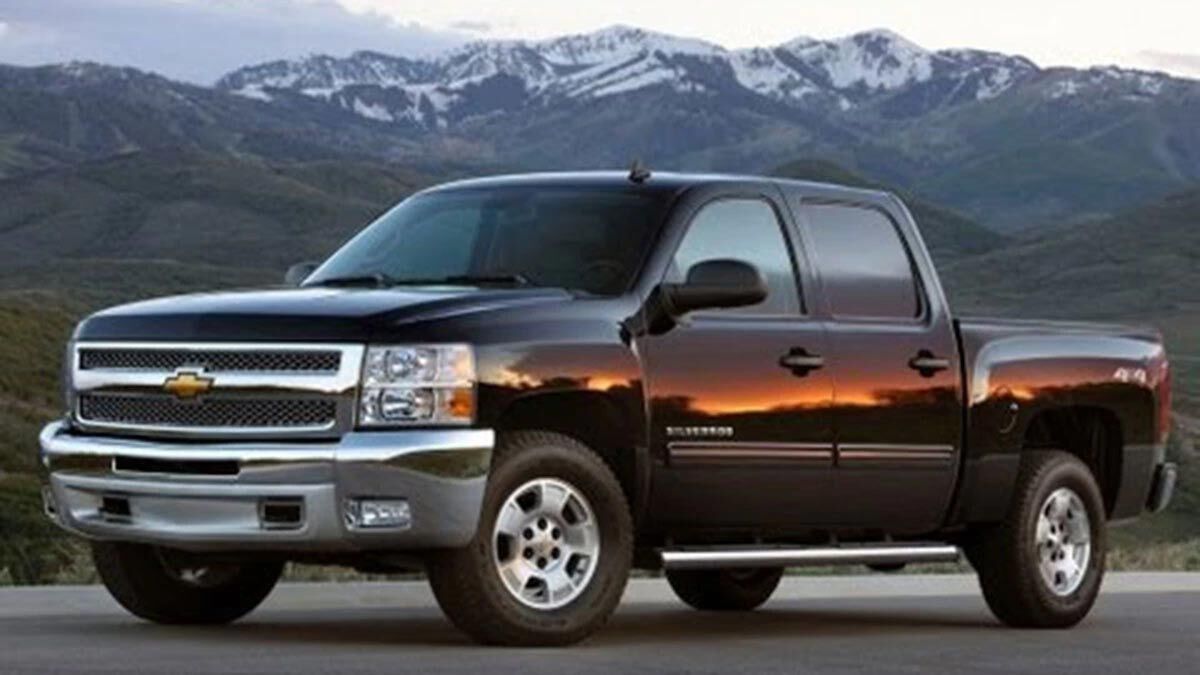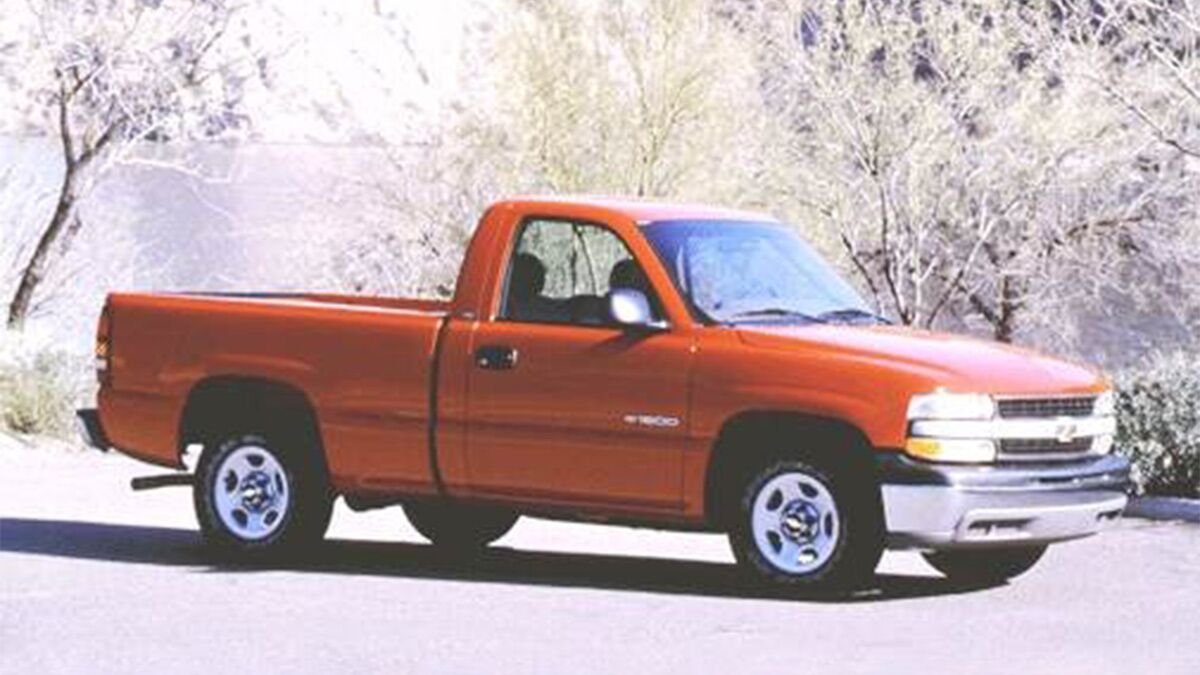Used Chevrolet Silverado 1500 Quick Facts
- A 2019 or newer Silverado is the best-used choice, followed by 2011-2013 for those with tight budgets.
- The Chevrolet Silverado offers a max tow rating of up to 13,300 pounds.
- Chevy offered a hybrid engine option between 2005 and 2018.
If you want a full-size light-duty pickup, your choices are limited to five brands. At the top of that mix is the Chevrolet Silverado 1500, a dynamo of a pickup truck with a long history and an even longer list of loyal customers. While the Chevy Silverado can’t match the towing and payload numbers of its archrival, the Ford F-150, its pluses make it a highly desirable used pickup. Available across numerous generations, the Silverado offers buyers a dizzying number of cab sizes, bed lengths, engine options, and add-ons. With the abundance of dealer and aftermarket add-ons, used Chevy Silverado 1500 buyers can still customize their rigs as though they were buying new.
- What Is the Best Model-Year Used Chevrolet Silverado?
- Chevrolet Silverado by Generation: Which Should You Buy?
- What Is the Most Weight a Chevrolet Silverado Can Tow and Haul?
- What Is the Longest Bed I Can Get on a Silverado Crew Cab?
- What Are the Issues to Watch Out for With a Chevrolet Silverado?
- Is the Silverado Hybrid a Good Choice?
- Is the Chevrolet Silverado a Good Vehicle?
- What Is the Difference Between a Silverado 1500 and a Silverado 2500?
What Is the Best Model-Year Used Chevrolet Silverado 1500?
In the pickup world, the Chevy Silverado delivers an uncommonly comfortable ride. It handles well, accelerates well, is reasonably good on gas, and holds repair costs right in line with most competitors. A 2019 to 2025 Silverado is the best choice when buying used. We’d opt for a 2021 or newer as they offer a wide range of trims, configurations, and engines, including a diesel. This generation also features the latest in safety and driver-assist tech, including sophisticated systems that help with all aspects of trailering.
If you’re operating on a tight budget, an older 2011-2013 second-generation Chevy Silverado is a good option, provided it’s been well-maintained. We would avoid the 2007-2010 Silverado with the 5.3-liter V8, as the early versions of the Active Fuel Management (AFM) system caused numerous problems.
UPDATE: GM has issued a massive recall on the 6.2-liter V8 dealing with possible defects with the connecting rods and crankshaft. This affects 2021-2024 Silverado 1500. GM has also extended the warranty on these engines to 10-years or 150,000 miles, although no repair work can be done until the recall is complete. As of now, GM is having issues supplying new engines, so owners who experience issues may be left waiting some time for a resolution. The extended warranty does not apply to replacement engines.
There’s also a recall on the 10-speed automatic transmission, which has been suffering issues, chiefly with the valve body. It too has an extended warranty of 15 years or 150,000 miles. This affects the 2020-2022 Silverado 1500, although later models may be subject to service bulletins regarding the same issue.
See used Chevy Silverado 1500 pickup trucks near you.
Chevrolet Silverado 1500 by Generation: Which Should You Buy?
Fourth Generation: 2019-Current

The latest generation Silverado (from 2019 on) offers so much more than the generation it replaces. There’s more capability for those who use their trucks to tow and haul, with a 13,300 maximum tow rating. A diverse powertrain menu includes a 2.7-liter 4-cylinder turbocharged engine pumping out 310 horsepower, a first for a full-size pickup. Other options include a 285-hp 4.3-liter V6, a 277-hp 3.0-liter inline-6 diesel, a 355-hp 5.3-liter V8, and a 420-hp 6.2-liter V8. Three transmission choices include 6-speed, 8-speed, and 10-speed units, which vary depending on the engine. As with past Silverado trucks, there are three cab configurations (Regular, Double, and Crew), three bed lengths, and multiple trims ranging from a simple work truck to luxurious sailboat hauler.
During this run, new trims emerge, like the Trail Boss and ZR2, as do more optional high-tech driver assists, including a blind-spot monitor, automatic emergency braking, adaptive cruise control, automatic high-beam headlights, and Super Cruise. There’s also more high-tech inside the cabin, especially in 2022 and later trucks. FYI, Chevy also carried over the third-gen Silverado into 2019, dubbed the Silverado 1500 LD.
Model-Year Changes:
2025: The WT gains standard cruise control, while LT and higher trims have trailer brake control. The ZR2 gets a premium audio system plus front and rear park assists.
2024: Along with several new packages comes a diesel engine option for the ZR2, wireless smartphone connectivity becomes standard on all trims, and the High Country gains standard adaptive cruise control. The 6.2-liter V8 gets an active exhaust system with a Sport mode.
2023: Chevy drops the 6-speed automatic transmission.
2022: The Silverado gets a modest refresh with a massive cluster that combines the digital instrument and infotainment screens in the LT and higher trims. The 2.0-liter turbo gets a big boost in torque, up to 420 lb-ft. Other notable changes include the addition of the off-road capable ZR2 trim and the hands-free driving assistance offered by Super Cruise in the High Country.
2021: A Multi-Flex tailgate arrives, along with wireless Apple CarPlay and Android Auto, improved trailer camera tech, enhanced towing capability, and more driver-assist features offered on lower trims.
2020: The Silverado sees several improvements, including a new diesel engine option, expanded towing technologies, and the availability of adaptive cruise control. More trims offer the 10-speed automatic and 6.2-liter engine.
See 2019 to current Chevy Silverado 1500 pickup trucks near you.
Third Generation: 2014-2018

Although it bears a striking resemblance to the second-generation Silverado, the third-generation truck sees improvements in its suspension, chassis, and engine efficiency, along with a more sophisticated and quieter cabin. The old extended cab gets replaced by a longer Double Cab with standard-opening rear doors to match the front, and the luxury-oriented High Country trim debuts.
The engine lineup is simplified to three choices: a 285-hp V6, a 355-hp 5.3-liter V8, and a 420-hp 6.2-liter V8. When equipped with the Max Trailering Package, max towing jumps to 12,500 pounds versus the previous generation’s peak of 10,700 pounds. In 2016, an eAssist mild-hybrid option for LT and LTZ trims with the 5.3-liter engine debuts. The eAssist system adds 13 hp and 44 lb-ft of torque and about a two mpg improvement over the non-hybrid engine.
Changes to the Silverado include a dampened tailgate and more safety and driver-assist systems such as a blind-spot monitor, forward collision alert, lane departure warning, and the Safety Alert Seat. Inside the cab, there’s an available touchscreen infotainment system and luxury features like ventilated front seats, a navigation radio, and an upgraded Bose audio system.
Model-Year Changes:
2018: The mild-hybrid eAssist package, previously only offered in a few states, becomes available nationwide, but only on LT and LTZ trims. All Silverado 1500 trucks have a rearview camera, and the tire-pressure monitoring system gains a fill alert.
2017: The Silverado’s max tow rating increases to 12,500 pounds, and low-speed automatic emergency braking joins the options list.
2016: The 8-speed automatic transmission pairs with the 5.3-liter V8, and Apple CarPlay debuts. New grille and headlight designs improve the visual appeal.
2015: The 6.2-liter V8 has a new 8-speed automatic transmission. New features include Siri Eyes Free iPhone integration and a spray-in bed liner option.
See 2014-2018 Chevy Silverado 1500 pickup trucks near you.
Second Generation: 2007-2013

The second-generation Silverado has a more squared-off look, a stronger chassis, greater towing ability, and more safety systems. In a nod to the growing use of the pickup as a daily driver, Chevrolet provides two interiors. The standard Work Truck, LS, and LT trims have an upright dash with big knobs and switches, plus a bench or bucket seat setup. The top-line LTZ trim gets a more luxurious interior pulled from the Tahoe and the Suburban and more upscale features such as a Bose audio system, heated leather seats, a power sliding rear window, rear parking aids, and rain-sensing wipers.
Extended cab models have rear-hinged access doors that swing out 170 degrees and feature power windows that retract into the door. New equipment for this generation includes a choice of five different suspension packages, stability and traction control, navigation radio, XM satellite radio, power-adjustable pedals, and side curtain airbags.
The engine lineup from the first generation carries over, with some V8s featuring the problematic variable cylinder deactivation system (AFM), which greatly improved fuel economy but also led to issues with increased oil consumption and failed lifters. Some of these issues were addressed with updates and improvements made after the 2011 model year.
Engines include a 195-hp 4.3-liter V6, a 295-hp 4.8-liter V8, a 315-hp 5.3-liter V8, and a 367-hp 6.0-liter V8. Max towing tops out at around 10,700 with the Max Trailering Package. The only transmission is a 4-speed automatic. A 2-Mode Hybrid option, pairing two electric motors with the 6.0-liter V8, joins the lineup in 2009.
Model-Year Changes:
2013: No major changes.
2012: The Silverado LTZ offers heated and cooling front seats, a new navigation system with a built-in hard drive, and a refreshed front end.
2011: No significant changes.
2010: The Silverado gains standard front side impact airbags and side curtain airbags.
2009: A new 6-speed automatic Silverado joins the 5.3-, 6.0-, and new 6.2-liter V8 engines. A hybrid option debuts.
2008: Changes are few but include available trailer brake control and satellite radio.
See 2007-2013 Chevy Silverado 1500 pickup trucks near you.
First Generation: 1999-2006

The first-generation Chevrolet Silverado spans nearly seven years. It debuted in 1999 and ended its run in 2006 with a Classic trim that ran alongside an all-new Silverado for another year. Despite its age, the first-generation Silverado holds up well stylistically, with clean lines, handsome wheels, and a carlike interior. These trucks are known for their powerful engine lineup, which starts with a standard 200-hp 4.3-liter Vortec V6. Two V8s, also part of the then-new Vortec engine lineup, are optional. The 4.8-liter V8 is good for 255 hp, while the 5.3-liter unit pumps out 270 hp. Over the years, the V8s see their horsepower increase to 285 and 310, respectively, while the V6 drops to 195 hp. Chevy also made a heavy-duty Silverado 1500 with a 300-hp 6.0-liter V8. There was also a 295-hp mild-hybrid engine option starting in 2005. It pairs the 5.3-liter V8 with a small motor/generator, helping improve fuel economy and acceleration. Both manual and automatic transmissions are available. Of the batch, the best engine — and the most common — is the 5.3-liter V8. Find one of these on the used lot, and you’ll get good power for passing and pulling, decent highway fuel economy, and a pretty solid reliability record. You’ll have the option of three cab styles: a regular cab, an extended cab with rear-hinged rear half doors, or a crew cab. Bed lengths vary depending on cab size but range from 5.5 feet to eight feet.
Within this generation are several firsts, including the first selective dampening shock system, a 4-wheel steering option called Quadrasteer, a hybrid pickup, and a high-performance SS model that featured a 345-hp high-output 6.0-liter V8 engine. One downgrade occurred in 2005 when the Silverado went from 4-wheel disc brakes to a setup of front discs and rear drums. Features like a navigation radio and side airbags were late to the game. The Silverado’s max tow rating is around 10,300 pounds, but only with the 6.0-liter engine. Most crew cab models with the 5.3-liter can tow between 7,500 and 8,500 pounds. The hybrid can tow 7,700 pounds.
See 1999-2006 Chevy Silverado 1500 pickup trucks near you.
What Is the Most Weight a Chevrolet Silverado Can Tow and Haul?
A 2019 and newer Silverado has a max trailer rating of up to 13,300 pounds when equipped with the DuraMax diesel and Max Trailering Package. The 6.2-liter V8 can pull 13,100 pounds, the 5.3-liter V8 has a max limit of 11,500, while the 2.7-liter turbo-4 can pull 9,500. The Silverado has a maximum payload rating of 2,260 pounds when equipped with the 4-cylinder turbo. The figure drops to 2,180 with the 5.3-liter and 1,970 with the Duramax diesel.
When properly equipped, the third generation has similar ratings, with a max towing figure of 12,500 pounds for the 6.2-liter V8, 11,100 pounds for the 5.3-liter V8, and 7,600 pounds for the 4.3-liter V6.
What Is the Longest Bed I Can Get on a Silverado Crew Cab?
On the third- and fourth-gen Silverado, the standard bed is 5.8 feet, with the option to upgrade to 6.5 feet. The longest bed, at eight feet, is not available with the Crew Cab.
What Are the Issues to Watch Out for With a Chevrolet Silverado?
Early versions of the Chevy Silverado 1500 have relatively few major issues. As the vehicle ages, some more common complaints include the ABS pump going bad, U-joints on either end of the aluminum driveshaft failing, and rust issues in the brake lines, rocker panels, and bed.
Early versions of the AFM (Active Fuel Management) system tend to cause valve issues, leading to oil consumption, lifter issues, and sometimes complete engine failure. Many owners have deactivated the system, but most known issues were resolved in trucks after the 2011 model year. Other issues with the second-generation Silverado include problems with the 4-wheel drive (4WD) position sensor switch, the HVAC mode doors failing, and the instrument cluster wholly or partially going out.
Is the Silverado 1500 Hybrid a Good Choice?
Because hybrid models between 2005 and 2018 only added a few extra horsepower and miles per gallon compared to standard trucks, we wouldn’t seek one out. The system just adds more complexity to repairs down the road and reduces maximum trailering. For example, in the 2009 version, even with the big 6.0-liter engine, towing is limited to 6,100 pounds.
Is the Chevrolet Silverado a Good Vehicle?
For most of its existence, the Silverado has served its owners well. The Silverado has a strong customer loyalty base, and its engines, transmissions, and 4×4 systems seem to hold up well over time. There are issues to watch for — such as electrical gremlins and rust if you live in a state that uses heavy amounts of salt — but in the world of used light-duty pickups, we would put the Silverado just behind the Tundra on par with the F-150 and above an older high-mileage Ram. As with any used vehicle, be sure to have a qualified mechanic check over your potential new-to-you, used truck before you buy. Until the recall is complete, we’d avoid the 2020-2024 Silverado with the 6.2-liter engine, unless its been checked or replaced.
What Is the Difference Between a Chevrolet Silverado 1500 and a Silverado 2500?
The Silverado 1500 is a regular 1/2-ton pickup, whereas the 2500 is a heavy-duty 3/4-ton truck. The 2500 offers more powerful engines, with a choice of a 6.6-liter gas V8 or a 6.6-liter diesel. The 2500 also has a more rugged suspension and can tow more weight up to 22,500 pounds).
See new and used Chevy Silverado 1500 pickup trucks near you.











